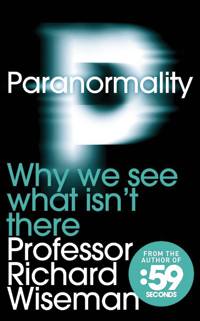In this week’s eSkeptic:
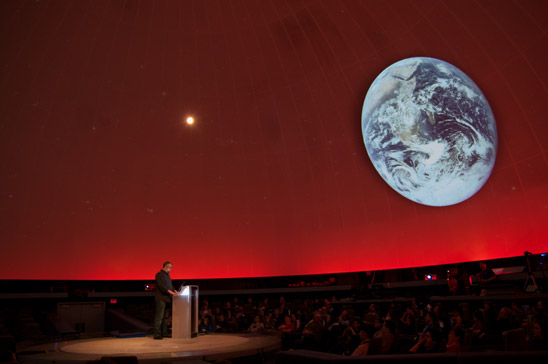
Daniel Loxton’s LogiCon 2011 Keynote Available Now
“While every human deserves scientific literacy, it’s not something we’re born with. It’s something we must be taught.” This is the theme of “The Reasonableness of Weird Things,” Daniel Loxton’s very personal Keynote Address from LogiCon 2011—available now in both audio and video formats.
Presented on the broadcast radio program Skeptically Speaking, the audio version includes both the speech and a new interview of Daniel by host Desiree Schell. Video of the speech is also available, courtesy of the Greater Edmonton Skeptics Society. (Handheld video, in four parts.)
Daniel tells the story of how his parents taught him to believe in the paranormal, and yet also taught him the critical thinking skills he uses in his work today. Having himself been both, Daniel explains that there are no neat lines between “skeptics” and “believers.”
“No matter how clever we are,” Loxton reflects, “at the end of the day, we’re at the mercy of our sources. Our beliefs are only as accurate as the information we have to work with.”
PHOTO: Daniel Loxton giving keynote address at LogiCON 2011. Photo by Mark Iocchelli

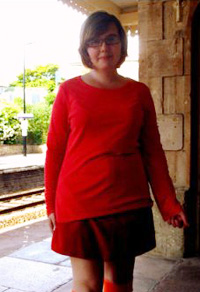
Hayley Stevens
Hayley Stevens’
Lake Monster Mysteries
There are very few people who make their living hunting monsters. For most of us who investigate such mysteries, it is a labor of love. Today on MonsterTalk we get to talk with one of our listeners about her investigation into a lake monster. In her investigation she went where few would dare to tread. Join us as we talk with amateur investigator Hayley Stevens about her dive into lake monster mysteries.

Interview with Richard Wiseman
Author and psychologist Professor Richard Wiseman has gained an international reputation as a skeptic for his research into luck, deception, the paranormal, humour, and the science of self-help.
This week on Skepticality, Professor Wiseman talks with Swoopy about his latest book, Paranormality: Why We See What Isn’t There and reveals how the research into telepathy, fortune-telling and out-of-body experiences has produced remarkable insights into our brains, behaviour and everyday beliefs.
About this week’s feature article
In this week’s eSkeptic, we present an excerpt from Richard Wiseman’s just released book, Paranormality: Why We See What Isn’t There (reprinted by permission of the author and publisher). Richard Wiseman is the Professor of the Public Understanding of Psychology at the University of Hertfordshire, UK.
SUBSCRIBE to Skeptic magazine for more great articles like this one.
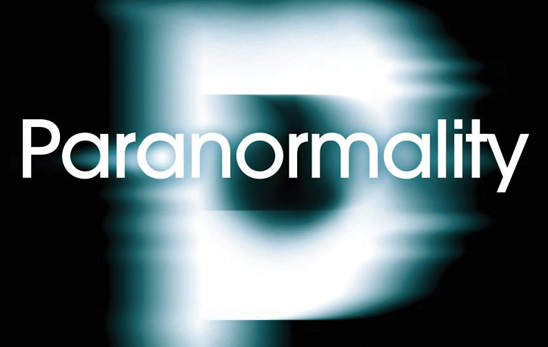
To Sleep, Perchance to Dream
How the science of sleep explains ‘precognitive’ dreams
by Richard Wiseman
Aberfan is a small village in South Wales. In the 1960s, many of those living there worked at a nearby colliery that had been built to exploit the large amount of high quality coal in the area. Much of the waste from the mining operation had been piled on the steep hillsides surrounding the village, and throughout October 1966 heavy rain lashed down on the area and seeped into the porous sandstone of the hills. No one realised that the water was then flowing into several hidden springs and slowly transforming the pit waste into soft slurry.
Just after nine o’clock on the 21st of October that year, the side of the hill subsided and half a million tonnes of debris started to rapidly move towards the village. Much of it slid into Aberfan and smashed into the village school, filling several classrooms with a ten metre deep mass of slurry. The pupils had left the school assembly hall a few moments before, having sung the hymn “All things bright and beautiful,” and so were just arriving in their classrooms when the landslide hit. Parents and police rushed to the school and frantically began digging through the rubble. Although a handful of children were pulled out alive, 139 schoolchildren and five teachers lost their lives in the tragedy.
Psychiatrist John Barker visited the village the day after the landslide. Barker had a longstanding interest in the paranormal and wondered whether the extreme nature of events in Aberfan might have caused large numbers of people to experience a premonition about the tragedy. Barker arranged for the Evening Standard newspaper to ask any readers who thought they had foreseen the Aberfan disaster to get in touch. He received 60 letters from across England and Wales, with over half of the respondents claiming that their apparent premonition had come to them during a dream.
Believing that you have seen the future in a dream is surprisingly common, with recent surveys suggesting that around a third of the population experience this phenomenon at some point in their lives. But are people really getting a glimpse of things to come? Throughout history, this question has taxed the minds of many of the world’s greatest thinkers. However, it is only in the last century or so that researchers have come up with explanations.
“Other than that, did you enjoy the play, Mrs Lincoln?”
Open almost any book on the paranormal and you will soon discover that President Abraham Lincoln once had one of the most famous precognitive dreams in history. According to the story, in early April 1865 Lincoln went to close friend and bodyguard Ward Hill Lamon and explained that he had recently had a rather unsettling dream. During the dream Lincoln had felt a ‘death-like stillness’ in his body and heard weeping from a downstairs room in the White House. After searching the building, he arrived at the East Room and came across a corpse wrapped in funeral vestments. A crowd of people were gazing mournfully at the body. When Lincoln asked who had died, he was told that it was the President, and that he had been assassinated.
Two weeks after the dream, Lincoln and his wife went to see a play at Ford’s Theatre in Washington D.C. A short time after the start of the play Lincoln was shot dead by Confederate spy John Wilkes Booth.
Sleep research may provide an explanation for the case. In the late 1960s researchers carried out a ground-breaking experiment with a group of patients who were attending therapy sessions to help them cope with the psychological effects of undergoing major surgery. The researchers monitored the patients’ dreams over the course of several nights and discovered that when they had attended a therapy session during the day they were far more likely to dream about their medical problems. For example, one patient was having a tough time coping with the drainage tubes resulting from his surgery. After spending time at a therapy session talking about the issue, he was especially likely to have dreams that involved him continually inserting tubes into himself and others. In short, the patients’ dreams tended to reflect their anxieties.
Paranormal investigator Joe Nickell has argued that this might explain Lincoln’s experience. Nickell has noted that even the briefest of glances through the history books reveals that Lincoln would have had every reason to be anxious about the possibility of being assassinated. Just before his first inauguration, he was advised to avoid travelling through Baltimore because his aides had uncovered an assassination plot there, and during his time in office he had received several death threats: on one especially memorable occasion an incompetent would-be assassin fired a shot through his top hat. Seen in the light of these findings, Lincoln’s famous dream suddenly looks less paranormal.
The same concept may also explain one of the most striking examples of alleged precognition about the Aberfan disaster. For several years before the disaster the local authorities had expressed considerable concern about the wisdom of placing large amounts of mining debris on the hillside, but their worries had been ignored by those running the mine. There is no way of knowing for sure, but some of the dreams may have been reflecting these anxieties.
But what about the other cases in which people produced evidence that they had described their dream before the tragedy occurred, and where the dream did not seem to reflect their anxieties and concerns? To investigate, we need to move away from the science of sleep and into the heady world of statistics.
The law of large numbers
Let’s take a closer look at the numbers associated with these seemingly supernatural experiences. First, let’s select a random person from Britain and call him Brian. Next, let’s make a few assumptions about Brian. Let’s assume that Brian dreams each night of his life from age 15 to 75. There are 365 days in each year, so those 60 years of dreaming will ensure that Brian experiences 21,900 nights of dreams. Let’s also assume that an event like the Aberfan disaster will only happen once in each generation, and randomly assign it to any one day. Now, let’s assume that Brian will only remember dreaming about the type of terrible events associated with such tragedy once in his entire life. The chances of Brian having his ‘disaster’ dream the night before the actual tragedy is about a massive 22,000 to 1. Little wonder that Brian would be surprised if it happened to him.
However, here comes the key statistics bit. When Brian is thinking about the chances of the event happening to him he is being very self-centred. In the 1960s there were around 45 million people in Britain, and this same set of events could have happened to any of them. Given that we have already calculated that the chances of any one of them having the ‘disaster’ dream one night and the tragedy happening the following day is about 22,000 to 1, we would expect 1 person in every 22,000, or roughly 2,000 people, to have this amazing experience in each generation. To say that this group’s dreams are accurate is like shooting an arrow into a field, drawing a target around it after it has landed and responding, “Wow, what are the chances of that?”
The principle at work here is known as the “Law of Large Numbers,” which states that unusual events are likely to happen when there are lots of opportunities for that event. It is exactly the same with any national lottery. The chances of any one person hitting the jackpot is millions to one, but still it happens as regular as clockwork each week because such a large number of people buy tickets.
The science of sleep and the study of statistics suggest that precognitive dreams may well be due to anxiety and the law of large numbers. Of course, it could always be argued that although these explanations are true of many apparently precognitive dreams, some others are still genuinely supernatural. The bad news is that although testing this sounds simple in theory, it is tricky in practice. It is no good asking people to get in touch after a national disaster or tragedy because they are likely to report just one of many dreams that they have had, or be part of the group of people who happened to get lucky via the law of large numbers (or they are just making up their dream and want attention). Also you can’t ask people to dream about an event that is in any way predictable. Instead, you have to record lots of people’s prophecies before an unpredictable event has happened. According to the law of large numbers you would end up with a large range of predictions, with just a small sliver of them subsequently proving correct. In contrast, those with a paranormal bent would predict that this would produce a surprisingly large number of the premonitions that point to one particular future. The good news is that such a study has already been carried out.
“The biggest story since the Resurrection”
In 1927, 25-year-old American Air Mail pilot Charles Lindbergh achieved international fame by making the first solo, non-stop flight across the Atlantic. Two years later Lindbergh married author Anne Spencer Morrow, and the two of them continued to attract huge amounts of publicity by setting several additional flying records, including being the first people to fly from Africa to South America, and pioneering exploration of polar air routes from North America to Asia. In 1930 the Lindberghs had their first child, Charles Lindbergh, Jr., and moved into a large secluded mansion in Hopewell, New Jersey.
On 1 March 1932 the Lindberghs’ world changed forever. At around 10 o’clock at night, the Lindberghs’ nurse rushed to Charles Sr. and told him that Charles Jr. had been taken from his room, and that the kidnappers had left a ransom note demanding $50,000. Lindbergh quickly grabbed a gun and searched the grounds. He discovered the homemade ladder that had been used to climb into the child’s second storey room, but found no sign of his son. The police were called and Colonel Norman Schwarzkopf took charge of the case and organised a massive search effort. The Lindberghs’ fame resulted in the case generating an enormous amount of publicity, with one journalist referring to it as “the biggest story since the Resurrection.”
A few days after the news of the kidnapping broke, Harvard psychologist Henry Murray decided to use the high profile case to study the accuracy of precognitive dreaming. He persuaded a national newspaper to ask their readers to submit any premonitions about the case that had appeared in their dreams. Word of Murray’s study spread from one newspaper to another, resulting in the psychologist eventually receiving over 1,300 responses. To properly assess the replies, Murray was forced to wait two years until the crime was solved.
Within a few days of his son’s disappearance, Lindbergh made various public appeals for the kidnapper to start negotiations. None of them elicited a response. However, when retired schoolteacher John Condon placed an article in a newspaper making it clear that he was willing to act as a go-between and add an additional $1,000 to the ransom, he received a series of notes from the alleged kidnapper. On the second of April, one note asked Condon to meet in a Bronx cemetery and to hand over $50,000 in gold certificates in exchange for information about the child’s location. Condon collected the certificates from Lindbergh, handed them over at the meeting, and was told that the child could be found on a boat that was moored along the Massachusetts coast. Lindbergh flew over the region for days but failed to find the alleged boat.
On 12 May 1932, a truck driver pulled over to the side of a road a few miles from the Lindbergh home and walked into a grove of trees to relieve himself. There he chanced upon the corpse of Charles Lindbergh, Jr., buried in a hastily prepared shallow grave. The baby’s skull was badly fractured, and his left leg and both hands were missing. A coroner’s examination later showed that the baby had been dead for about two months and that his death was due to a blow on the head.
For over two years the police struggled to solve the crime. Then, in September 1934, a petrol station attendant became suspicious when a customer paid for five gallons of petrol with a ten dollar gold certificate. The attendant took a note of the customer’s number plate and passed it on to the authorities. The police identified the vehicle’s owner as Bruno Richard Hauptmann, an illegal German immigrant currently working as a carpenter. Police searched Hauptmann’s house, discovered $14,000 of the ransom money, and promptly arrested him. During Hauptmann’s trial the prosecution showed that his handwriting matched the ransom notes sent to Condon, and that the floorboards in his house were made of the same wood as the ladder discovered at the Lindbergh’s house. After an 11-hour deliberation, the jury returned a guilty verdict and Hauptmann was sentenced to death.
Case closed, Murray set to work. He examined his collection of alleged premonitions for three important pieces of information that would have helped the police investigation enormously—the fact that the baby was dead, buried in a grave, and that the grave was near some trees. Only about 5 per cent of the responses suggested that the baby was dead, and only 4 of the 1,300 responses mentioned that he was buried in a grave near some trees. In addition, none of them mentioned the ladder, extortion notes or ransom money. Exactly as predicted by the “dream premonitions are the work of normal, not paranormal forces” brigade, the respondents’ premonitions were all over the place, with only a handful of them containing information that subsequently proved to be accurate. Murray was forced to conclude that his findings did “not support the contention that distant events and dreams are causally related.”
For thousands of years people believed that their dreams could provide a fleeting glimpse of the future. Science has provided explanations for many of these alleged acts of prophesy. Carry out experiments that eliminate these factors and suddenly the sleeping mind cannot figure out what tomorrow will bring. There are many more mysteries of sleep waiting to be solved, but one thing is certain—for those who wish to believe in the reality of the paranormal, the findings from the science of sleep are a nightmare.![]()
Skeptical perspectives from Richard Wiseman…
-
 Luck, ESP & Magic: How Science Tests the Unusual
Luck, ESP & Magic: How Science Tests the Unusual
by Dr. Richard Wiseman
-
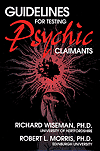 Guidelines for Testing Psychic Claimants
Guidelines for Testing Psychic Claimants
by Richard Wiseman and Robert L. Morris


